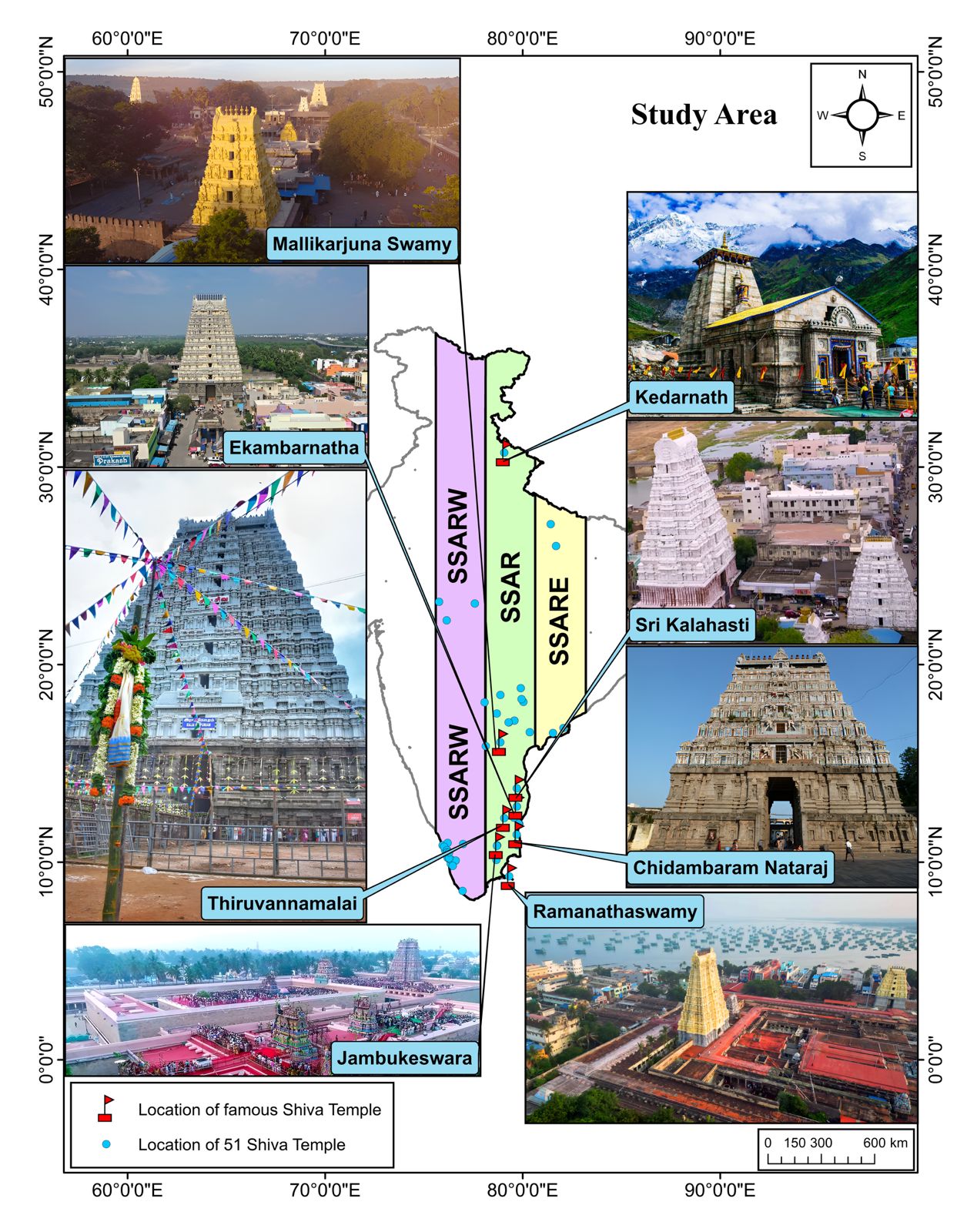IIT Roorkee study reveals a major environmental mystery surrounding Shiva temples.

a
A study by IIT Roorkee has revealed a significant alignment of ancient Shiva temples with natural resource hotspots. Combining ancient Indian knowledge with modern scientific analysis, researchers at IIT Roorkee, in collaboration with Amrita Vishwa Vidyapeetham (India) and Uppsala University (Sweden), conducted a landmark study. It found that the locations of eight major Shiva temples across the country not only hold profound spiritual significance but also correspond to high centers of water, energy, and food productivity.
IIT Roorkee’s Study Makes a Major Revelation!
According to this study, published in Humanities and Social Sciences Communications (Nature Portfolio), these temples, from Kedarnath in Uttarakhand to Rameswaram in Tamil Nadu, were located along the Shiva Shakti Axis (SSAR) around 79° East longitude. Satellite data and environmental analysis revealed that these alignments are in areas rich in water resource availability, agricultural yields, and renewable energy potential.

The Environmental Mystery of Shiva Temples Reveals Shocking
The study suggests that these temples may have been not only places of worship but also symbols of the five elements (Panchbhuta) and civilizational indicators of resource planning. Lead author Bhabesh Das stated that ancient temple builders were also environmental planners,
whose decisions were driven by a deep understanding of land, water, and energy resources. Co-investigator Professor Thanga Raj Chelliah described this as a remarkable interdisciplinary collaboration that bridges heritage and climate resilience.
These findings demonstrate that India’s cultural heritage holds strategic environmental insights that can be reapplied to find solutions to sustainable development and climate challenges today.







